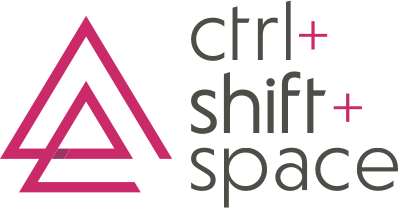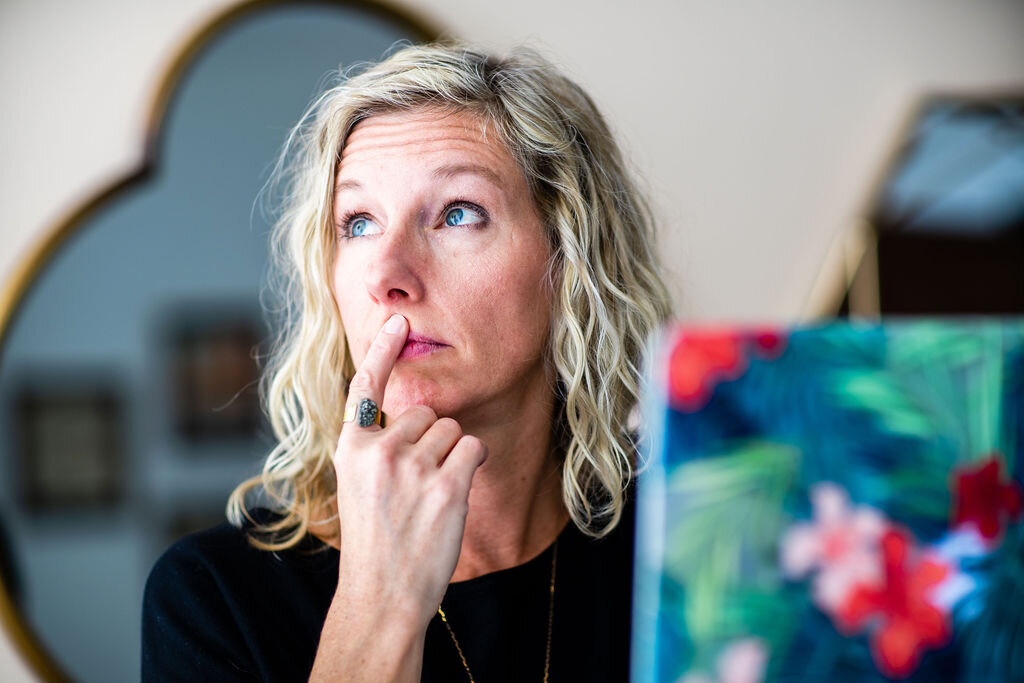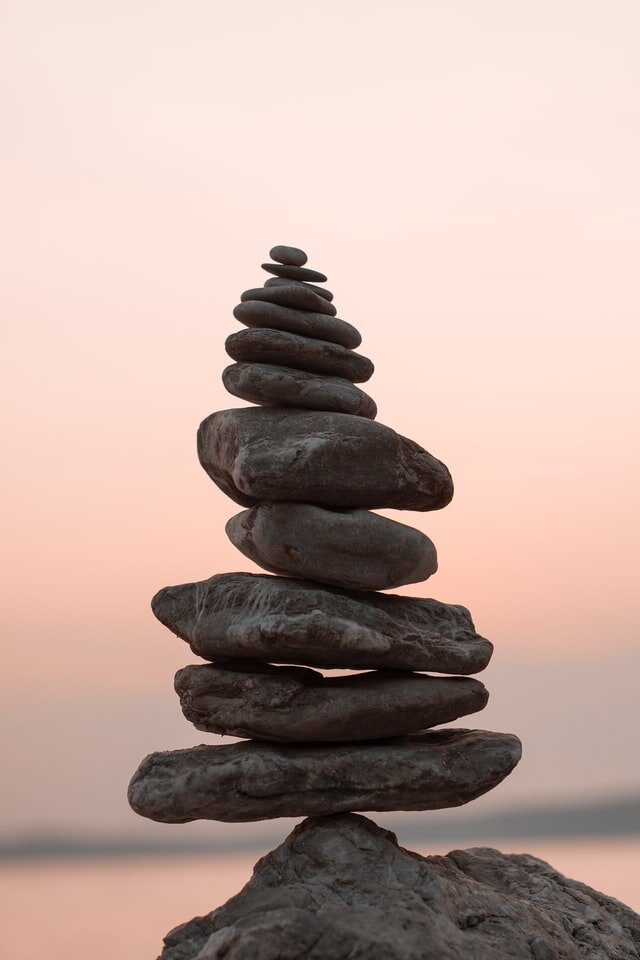Ask me in early 2015 if I thought I’d be entering my 6th year as a business owner in 2021 and I probably would’ve guffawed loudly and said something like: “Ya right, in my dreams”!
Fast-forward to today and I’m laughing all right, and also crying a little to be honest. The last 5+ years of running ctrl+shift+space has evoked a lot of emotions, that’s for sure, and while there have definitely been great times along the way, not all of them have been the stuff dreams are made of. 2020 made sure of that.
Rather than sugar-coat my entrepreneurial story, I’m here to tell it to ya straight - the journey has never been a piece of cake. But maybe that’s a good thing since I’m more of a tart berry pie kinda gal anyhow! In the spirit of giving-back, or better yet paying it forward, I want to share some of my most memorable experiences as the owner of a consultation business with you. What I want you to know, are the things I wish I’d known or that someone would have told me years ago so that I would’ve been able to skip along my path a little more lightly and swiftly without quite as many unfruitful side-trips.
But before the story-telling starts, here are a few ahas to take note of. As with most business owners, I’ve read a bunch of books about entrepreneurship, sales and marketing, leadership and business development, etc. And though many of them do try to prepare you for the ups and downs, most of them also describe the journey with rose-colored glasses on, telling only the highlights, the sweet mergers, and the windfall ‘exits’ and acquisitions of unicorns. But let’s face it, not all entrepreneurs are in the tech industry, not all companies sell physical products, and certainly not every business owner is looking to burn themselves and their employees out while trying to get funding, scale up and be purchased. So when people like me, who have different aspirations and reasons for going into business (like to improve the happiness and wellbeing of human beings) try and seek guidance for how best to sell tricky and complex services, a lot of (expensive!) business management experts don’t quite know how to advise someone who isn’t selling software apps, or pieces of equipment, or food or clothing items. In that sense, it’s been a rather lone-wolf, pave-my-own-path sort of experience - which I’ve had to learn the hard way after having spent much hard-earned money on classes, content and coaches with very little R.O.I.
So a little advice: pay for the experts or buy those books if you will, but do so knowing that the answers you need aren’t always going to be easy or quick to find in a podcast subscription or in a business guide. Nothing can fully prepare you for the unique experiences you’ll have as a business owner. Until you’ve been there and done that, you don’t know what you don’t know - and that’s OK - just be aware there will be a lot of bumpy roads and shiny billboards that will try to veer you off course. You’ll need a strong will, an even stronger constitution, as well as an unflappable ability to be patient and persevere through some pretty challenging and sometimes very dark periods when throwing in the towel may seem like the only option. Basically, starting and owning a business, no matter the size or situation, ain’t for the faint of heart.
Now buckle up, ‘cause these stories may feel like a rollercoaster ride...or at the very least you’ll get a fly-by glimpse into the life of one woman’s solopreneur journey.
The Honeymoon - 0-12 months, or 2015-2016
The first year, or I’ll be honest, it was more like the first 6-months, felt utterly amazing. I was free to do as I pleased, how I pleased, when I pleased. As with most new loves these were exciting times, but it was a little like jumping into marriage after a couple months of hot dates. At least I had the wherewithal before tying the proverbial knot, to do a bunch of interviews with professional connections and friends in the architecture, furniture and workplace design community to validate my business plan and ideas. Most of them confirmed that the problem I wanted to solve existed, but they weren’t too confident that the market was ready for the solutions I thought would fly off the shelf. But, in my exuberance over having come up with what I thought was going to be a home-run, I heeded little caution and went full steam ahead.
Lesson #1
‘Build-it and they will come’ is somewhat of a pipe dream. At least in this case where my ideas and solutions, while creative and justified, were a tad too ahead of the times which made for a steep and difficult climb toward finding qualified leads who valued my expertise enough to hire me.
Still, I made the leap and opened for business in late 2015. At the time, I was focused on delivering what I thought office tenants needed, a representative who would help them navigate the process of leasing, designing, outfitting and moving into a new human-centered workplace. Seems straightforward, right? So much so that many inexperienced people oversimplified and underestimated the relocation process to the degree that they thought ‘it can’t be that hard, we’ll just do it ourselves.’ What they didn’t know...they found out later as it bit them in the a$$ with extended timelines, costly mistakes and painful ulcers. What I didn’t know, and that bit me in the derrière, was how challenging it would be to find business decision-makers who cared about their employees as much as they did their bottom line.
Photo by Interactive Sports on Unsplash
The Reality Years - 13-36 months, or 2016-2018
This girl just wanted to have fun! Or so I’d imagined the majority of my time would be spent = representing high-profile clients, liaising with talented designers and architects, traveling for projects, and working some serious magic to improve people’s workplace experiences. After all, I was passionate about my work, knew the process and what challenges organizations faced, plus I was eager to help make a difference by creating human-centered work environments.
What I didn’t know was how difficult it would be to easily explain the value of what I do in lay-terms to people with short attention spans, or how much money and effort would be needed to build brand awareness, or what toll it would take on my family for me to work extreme hours but barely make enough money to scrape by. It wasn’t that I had total blinders on when it came to these realities. It was that I had no idea the length of time it would take to gain even a small foothold in the market, or how all-consuming it would be as a solo-preneur to do it all: network, develop business and build a client base, or the blood, sweat and tears that would go into gathering an impressive enough portfolio to help sell the solutions easier by word of mouth and through example projects.
Lesson #2
Hard work doesn’t always mean a windfall or even cash-paying clients from day one. Rather it’s investing the time (trading services?!) and making the right kind of efforts that will eventually bring home the bacon - in a feast or famine sort of way.
Don’t get me wrong, I had a lot of fun during these early years. My creative juices and energy were flowing non-stop and I was seeing the results. The rude-awakening, however, was that after 3 years in business, I had drained my savings account to bootstrap a business that was just beginning to find an elusive market of early adopters.
Settling Down (and out?) - Years 4-5 or 2019- early 2020
At last, I’d made it past what many ‘start-up’ experts say is the most difficult stage and when most new businesses fail. Year 3 was over. I’d crossed some invisible barrier into no-woman’s land...or so it felt at the time. By this time I’d written and co-authored articles, was interviewed and quoted in several publications as an expert, plus had received some great press over a handful of my favorite and most successful projects. To boot, I hadn’t gone bankrupt, and in fact had a healthy balance sheet that was in the black.
Though I’d kept my operating expenses super lean, with very little overhead (I had no need to rent a physical office for my business because I spent so much time at my client’s workplaces), I still took very little in owner’s draws and instead invested most profits back into the business. The biggest expense I had (and simultaneously most anxiety-causing/relieving things I’ve done) was hiring my first employee to manage back of house administrative and other activities like invoicing, file management, customer service and random project support tasks. Other business operations like accounting, taxes, legal, etc., were, and still are, contracted out as needed. Even so, I still wasn’t able to pay myself what I’d imagined and wanted my salary to be - after all this time!
Photo by Melani Sosa on Unsplash
Something had to change. Yes, I’d had some great successes, but I still needed to make a decent living for all the time and effort I was putting into the business. So it was time to seek advice and try something new. Taking my own advice (see above), I didn’t hire a business coach, or read yet another book. Instead, I applied for a scholarship and was accepted into a program designed just for women entrepreneurs who were looking to take their businesses to the next level. Though the materials and guest speakers were geared for a broad audience focused on tech and product-based businesses, I still walked away with some great ideas for how to expand my offerings as a consultant. Invigorated with a renewed spirit, I quickly engaged a talented team to take me through a brand refresh, updating colors, graphics, website and sales and marketing materials. I also began developing some ‘products’. These took the shape of digital self-help or DIYer guides with expert tips and tricks for businesses going through leasing, relocating and designing offices. About the same time we’d finally called it a wrap and put the bow on the packages, there was a delay with the launch of our products. Enter COVID-19, the virus that turned the world as we know it, upside down.
Lesson #3
Putting your eggs in one basket isn’t advised. But neither is putting the rest of your eggs into a basket that’s about to blow up.
Because of the global pandemic, I’ll never know how successful the digital packages I painstakingly developed may have been. But it wasn’t all a loss, because I did learn some other interesting things about myself - professionally and personally - and for that reason 2020 wasn’t entirely the year from hell, but pretty darn close.
Photo by Bekir Dönmez on Unsplash
The Whopper - Year 6 or Q2-2020-Present Day
When COVID-19 first became ‘real’ to me, and not just some far away phenomenon happening on the opposite side of the world, was when the schools shut down in March and we were told to ‘stay home, stay safe’. It unfortunately coincided at the beginning of a 2-week trip my husband was taking to sail across the Pacific to deliver a newly constructed catamaran from the west coast to Hawaii (but that’s another story). Like everyone else, all of a sudden my kids (4th/6th graders) and I went from freedom to lock-down. Thankfully I was used to working from home and was already set up to handle most of my projects remotely by phone or video conference. What I wasn’t prepared for, was the instant juggling act, the code-switching and multitasking between being a business owner, a mom, a distance-learning teacher, a cheerleader - you name it, all of those roles landed squarely on my shoulders overnight. Needless to say, it was a BIG adjustment to make and there was no way around it besides to find a way to get by. It was only a temporary setback after all...or so we thought at the time.
I worked through things with my clients (and family) and reprioritized and rescheduled when possible. I dried a lot of my kids’ (and frankly more of my own) tears as we watched and waited to see what would happen. After my husband returned from Hawaii, thankfully safe and sound, we were able to sort out a reasonable work schedule for us both. Yet, as self-employed ‘luck’ would have it, that meant I had the flexibility to slash my work hours (in half!) in order to do the childcare and teacher thing.
The first thing I quickly learned was my time was so much more precious and valuable now as a part-timer, and though it was difficult, I had to say ‘no’ to most of the volunteer work I had been doing. I also discovered that I’m not cut out for critical-thinking, writing and producing deep and meaningful content when distracted by my kids and pets. Instead, I waited until my husband got home in the late afternoon to crank out that kind of work, which wasn’t (and still isn’t) ideal. Being I’ve never been, nor will I ever be, a morning person, getting up at the crack of dawn didn’t make much of a difference with productivity. So I also figured out how to be a better time manager and prioritize my activities in ways that suited the new scheduling constraints. I got used to the phrase ‘done is better than perfect’. I did (and still do) all of my ‘light’ work, like emails, quick calls and approving social media posts, during school hours, saving the heavier parts of the job for times when disruptions would be less or nonexistent.
As for working on the business (unlike working ‘in’ the business above), I had my work cut out for me. Since my usual channels for finding sales leads and getting referral business came primarily from in-person networking, I had to switch gears. Thankfully, several months prior to COVID hitting, I’d come to the realization that I must expand my business development repertoire and had hired a consultant to manage my social media to increase the impact of marketing and branding activities. Part of the strategy has included writing more blogs and developing newsletter content to continue building thought-leadership and brand awareness.
After the temporary ‘stay home, stay safe’ turned into a semi-permanent status, I went ahead and decided to launch the new digital packages a couple of months later than planned. Since then, I’ve also developed a couple other digital products to round out the DIYer offerings and have plans to create a few more this year. This has been a hard decision, since I’m betting on the office market picking back up, if not immediately, it will eventually. Fortunately, 2020 turned out to be not as bad as I’d imagined, having a couple of solid projects to work on I was able to make ends meet with the help of a PPP loan (thank goodness for that!)
Lessons #4-8
Overall the most important things I’ve learned this past year include:
#4 Family and health (mental and physical) come first, always. When I’m tired or feeling burned out, I’m no good to anyone, least of all to myself.
#5 Making time management a priority is crucial - as is not procrastinating. There are only so many productive hours in a day, so whether perfect or not, I’ve learned to just get it done in the time allotted and move on to the next thing.
#6 The key to scheduling your day is allocating the right chunk of time for the activity or task at hand - which is an ongoing learning process.
#7 It’s OK to say no. Especially if it’s a question of your mental health, or when your kids and family need your full attention.
#8 Always look for the silver lining, and keep your eyes peeled for opportunities to hone skills, develop new solutions, narrow your focus and engage with your dream audience. This is my main focus for 2021.
Photo by Cristofer Jeschke on Unsplash
Final Thoughts
When I look back and think of all that’s been learned and accomplished in my business over the years, I am deeply appreciative of those who have supported and encouraged me along the way. I also see where my naivety made me stumble time and time again, and where the evils of wishful thinking kept me going but often in the wrong direction.
As I reflect, I become even more grateful for the patience and trust that my family, in particular, have shown me. I am humbled when I think of how all the referrals from my professional network and kind words from my clients have propped me up and made my business into what it is today, modest but still successful.
Some of you readers might think I’ll never reach paradise because of the unconventional path I’ve chosen. What I’d say to you is, for me, it’s more about the journey and experiences along the way versus only focusing on the distant, mirage-like horizon. Without feeling the bumps, avoiding the potholes, climbing the hills and navigating blind-corners, growth and learning don’t happen and we miss out on becoming resilient and wise beings.
So, I say, embrace the good, the bad, and the ugly - it’s all about the ride, not just the destination!
- - -








